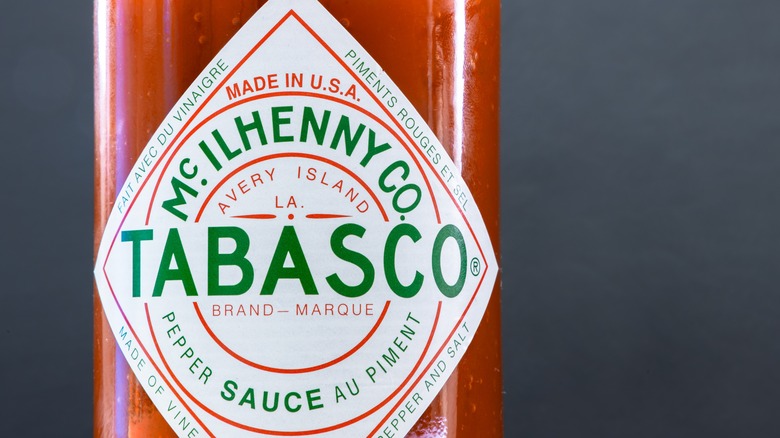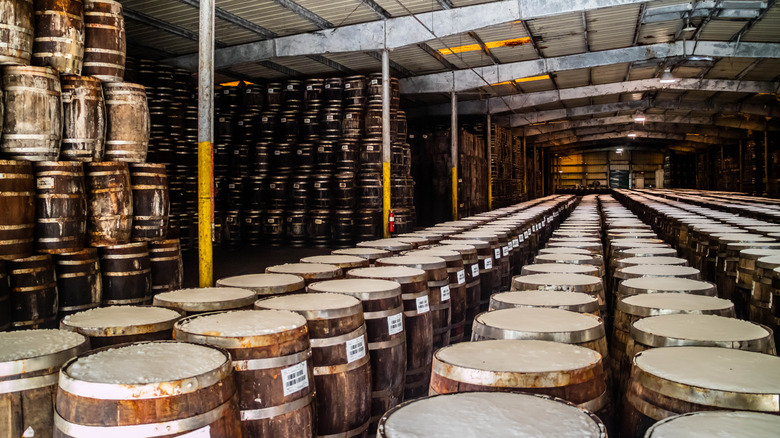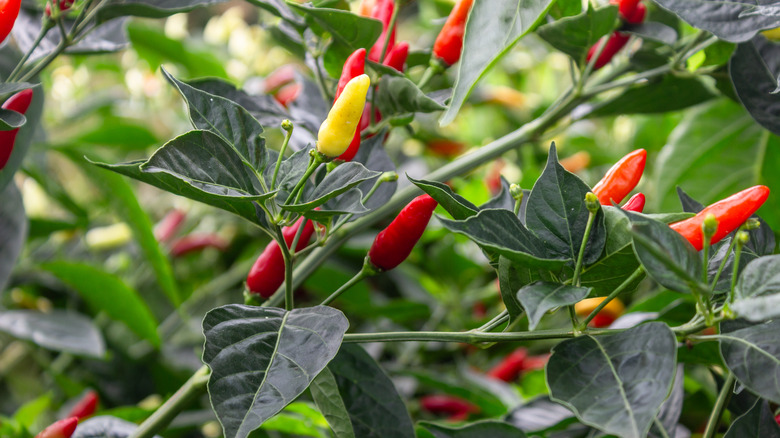The Critical Process Behind Tabasco Sauce's Iconic Red Color
Tabasco brand hot sauce with its unique flavor, storied history, and famous design, remains, after more than 150 years, a byword for the spicy condiment, like Kleenex has for tissues. It's accompanied U.S. soldiers into combat, been in space, and can be found in more than 195 countries worldwide. The product is hard to miss with its diamond shaped label on a small, straight-sided glass bottle and the fiery red sauce within. It's become the go-to hot sauce for everything from the original bloody mary to pizza — and it's an easy way to take canned chili to the next level, along with beer, brown sugar, and bacon.
The company is still owned by the McIlhenny family, whose forefather Edmund first sold the sauce in 1869 after perfecting the recipe with the help of formerly enslaved people. Since the sauce, which is aged in oak barrels like bourbon, only has three ingredients — tabasco peppers, salt, and vinegar — the peppers need to be perfectly ripe, which requires knowing exactly when to pick them. The secret to the company's success in accomplishing this is a painted red stick that their pickers use to verify the correct color.
Not much has changed with Tabasco in 150+ years
Tabasco brand hot sauce is still made in Avery Island in Southwest Louisiana (just south of my hometown of Lafayette) using the same heirloom tabasco seeds from the plants that Edmund McIlhenny first began growing there. Avery Island isn't an island but rather a giant salt dome, which still provides the salt for Tabasco sauce. The land rises above the surrounding area and is bordered by swampland.
The tabasco pepper originated in Mexico and is closely associated with the Mexican state of Tabasco, in the southeast part of the country along the Gulf of Mexico. The peppers grow to be between 1 and 2 inches long and are considered medium hot — much spicier than jalapeños — but after they've been combined with vinegar and barrel aged, the resulting sauce is less fiery. The story of just how Edmund came into possession of these pepper seeds is shrouded in myth, but there is evidence that a plantation owner near New Orleans was growing tabasco peppers as early as 1849.
How to pick a perfectly ripe tabasco pepper
The key flavor difference between red and green hot sauce is that the ripe red peppers tend toward a slightly sweeter taste than the more herbaceous notes from the unripened green peppers. In the case of Tabasco sauce, the company was after consistency for flavor and color, so it needed an easy way of clueing in pickers on the peppers that were at peak ripeness. Their solution was "le petit bâton rouge," or "the little red stick" in English (not to be confused with the state's capital, Baton Rouge).
It's unclear exactly when the McIlhenny Company first began giving their workers these wooden dowels painted with the specific red hue they were after in their Tabasco peppers, but they are still in use today and continue to ensure that Tabasco sauce retains its iconic color and taste. If you're drawn to this classic condiment but are wary of its kick, you can increase your spice tolerance by slowly introducing heat into your diet.


